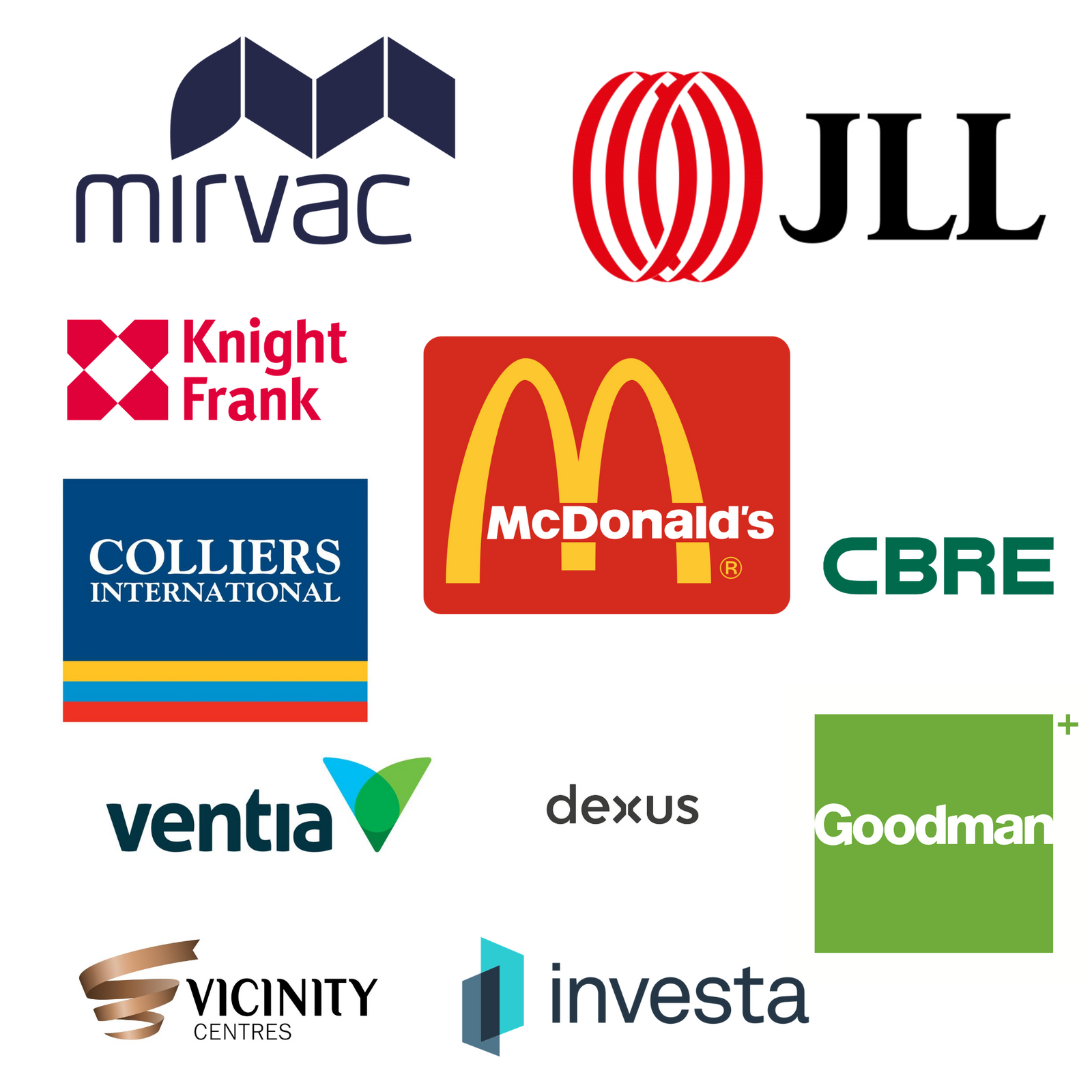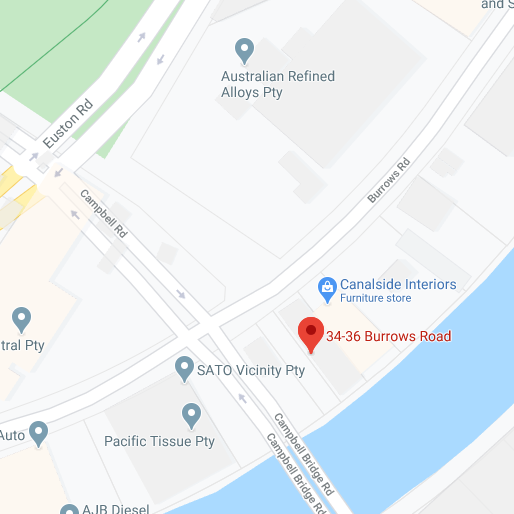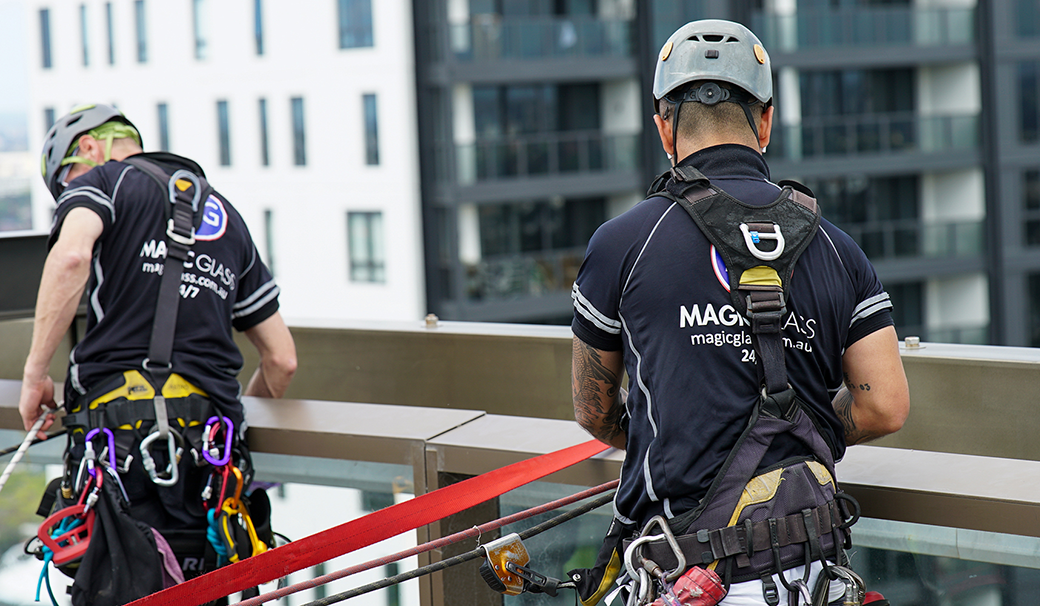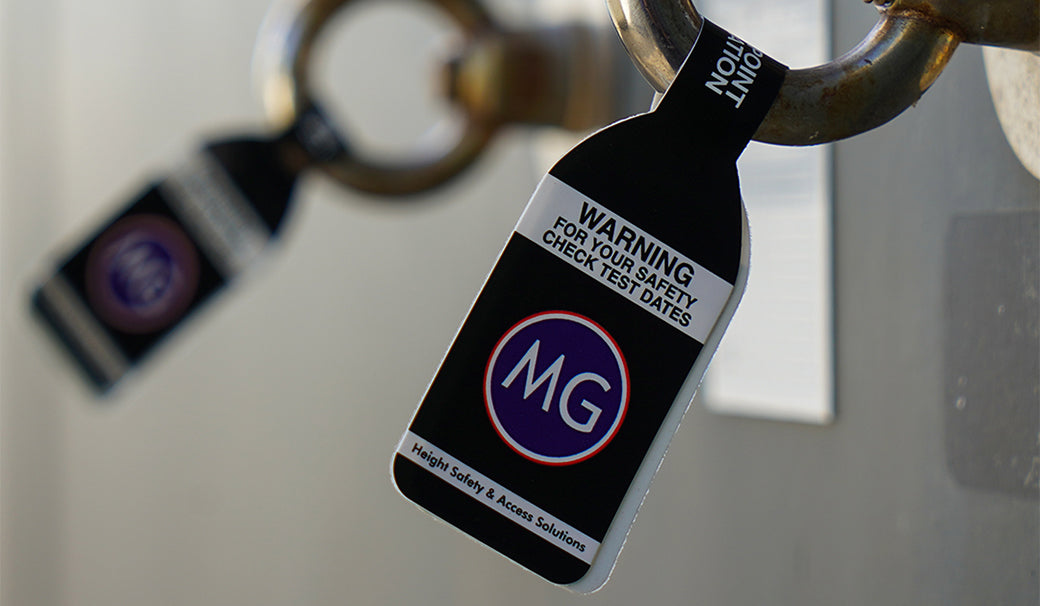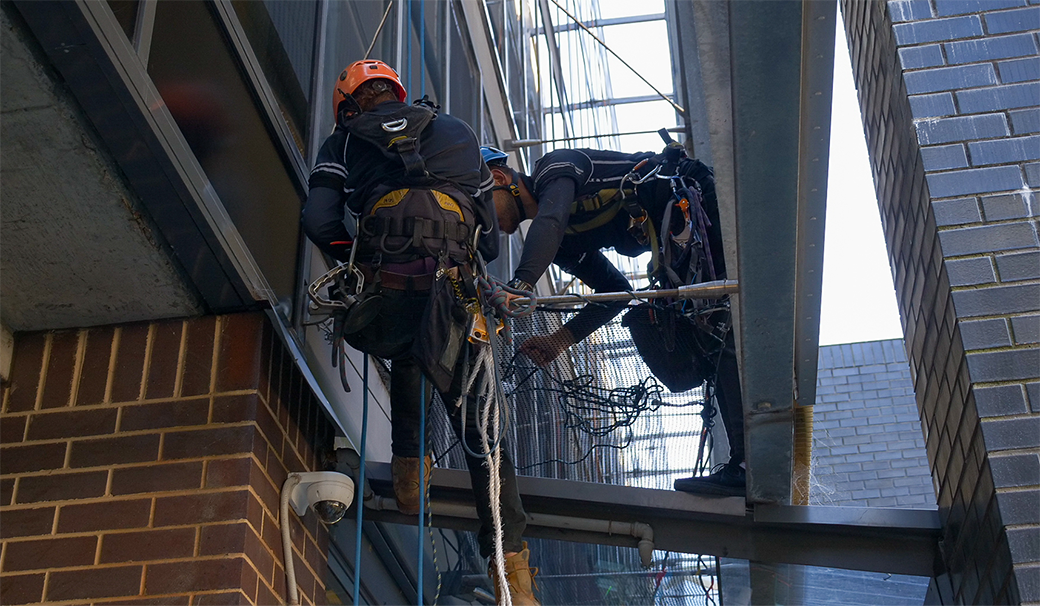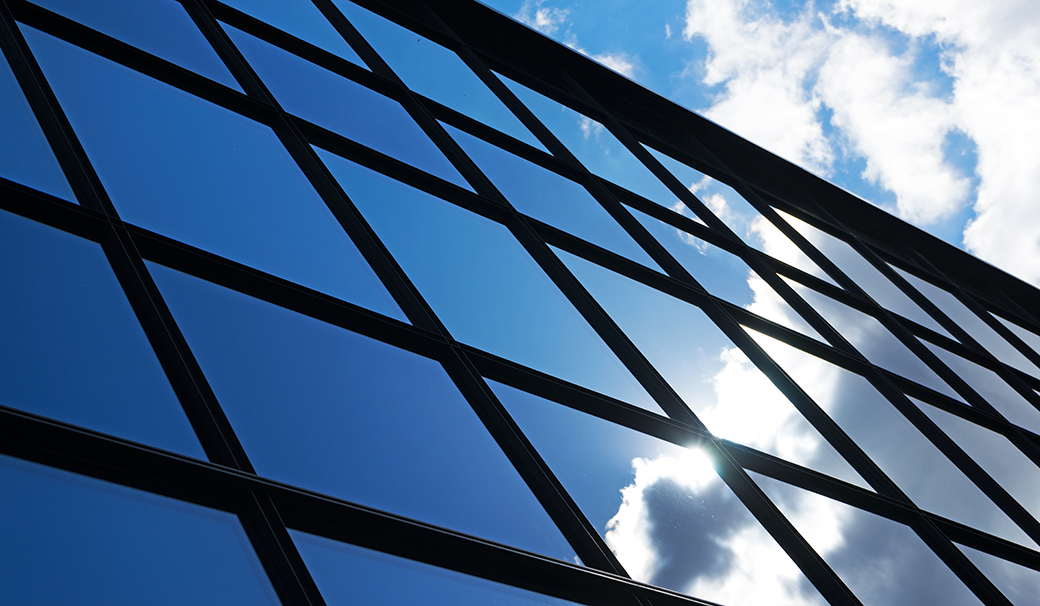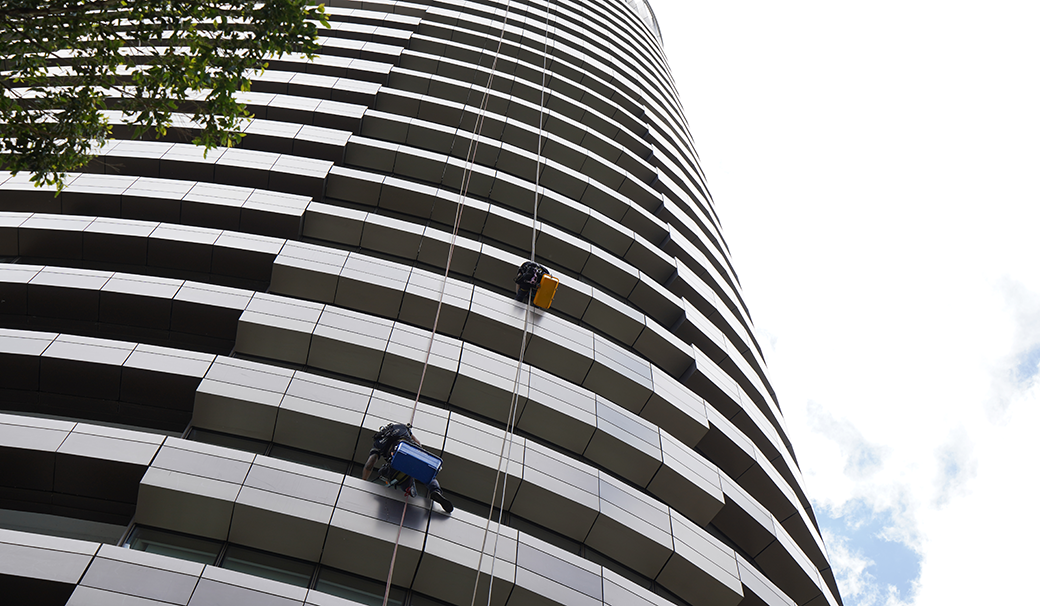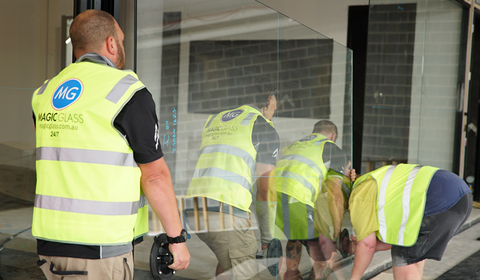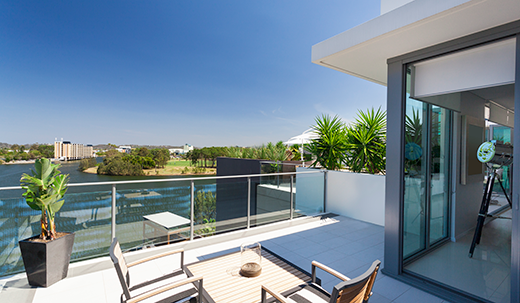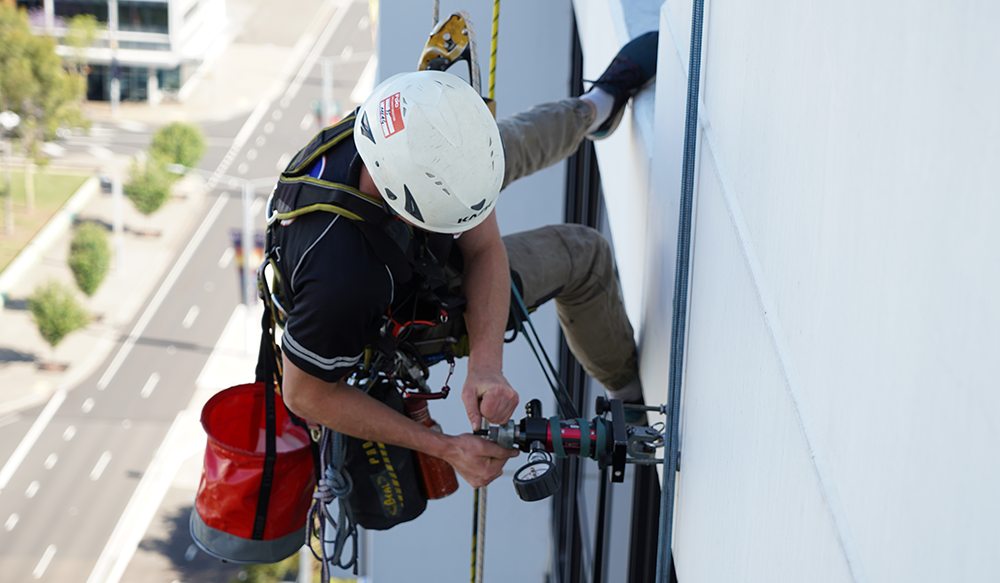Glass Blog
Rope access is a method used to reach high or difficult-to-access areas via a rope and harness system. It is commonly used to conduct a variety of work including glazing, cleaning, installation, restoration, repair, waterproofing, and painting.
What are the Benefits of Rope Access?
Rope access is the access method of choice for many building owners, property managers, strata managers, and facility managers. This is because it presents many benefits over alternative methods of access. Some of these benefits include:
- Efficiency: Rope access equipment can be assembled and disassembled very quickly. This reduces time requirements, allowing for a more efficient service.
- Safety: Rope Access Technicians must undergo extensive training in order to conduct rope access work.
- Versatility: Rope access allows workers to access areas that would not be accessible using other methods. It does not restrict mobility and can be used in an abundance of areas ranging from confined spaces to large-scale high-rise buildings.
- Environmentally Friendly: As rope access does not require the transportation of large, heavy equipment through the supply chain and on-site, it releases much fewer emissions than alternative access methods.
- Minimises Disruption: Compared to alternative height access methods, such as scaffolding, rope access has minimal disruption on a building and the building’s occupants.
If you require any work for your high-rise building or other hard-to-access structure, get in touch with Magic Glass. Our certified Rope Access Division offers a variety of services for both commercial and residential clients. These services include:
- External window and facade cleaning
- Height safety installation
- Make safe services
- Facade inspection and reporting
- Facade remedial repair
- Safety and debris netting
- Bird proofing and pest control
- Rust removal
- Facade painting and waterproofing
- Signage installation and removal
And more!
Contact Magic Glass for more information.
As a provider of rope access services, Magic Glass is committed to ensuring the safety and stability of our projects. One key element of this is the use of anchor points, which are used to securely attach ropes and other safety gear to a structure or surface. Anchor points play a vital role in rope access work, and it's important to choose the right ones for each project.
To find out more about anchor points and why they are so important, read on!
What are Anchor Points?
Anchor points are fixed points on a structure or surface that are used to attach ropes, harnesses, and other safety gear. They are designed to withstand a specific load, and they are typically rated by a professional engineer or other qualified individual. There are many different types of anchor points, including:
- Natural anchor points: These are existing points on a structure or surface that can be used as anchor points, such as beams, columns, or other structural elements.
- Temporary anchor points: These are anchor points that are installed specifically for a rope access or fall arrest project and are removed when the project is complete. They may be made of materials such as steel or concrete, and they are typically installed by a qualified professional.
- Permanent anchor points: These are anchor points that are permanently installed on a structure or surface and are used for ongoing rope access work. They may be made of materials such as stainless steel or aluminium, and they are typically installed by a qualified professional.
Why are Anchor Points Important?
Anchor points are an essential component of rope access and fall arrest work, as they provide a secure attachment point for ropes and other safety gear. Without proper anchor points, rope access work would not be possible, as there would be no way to safely attach the ropes and harnesses.
In addition to being necessary for the work itself, anchor points also play a critical role in ensuring the safety of workers. Rope access work involves working at height and using specialised equipment, and anchor points help to ensure that the ropes and harnesses are securely attached and able to hold the weight of the worker.
How to Choose the Right Anchor Points
Choosing the right anchor points is essential for the safety and stability of rope access work. Here are some factors to consider when selecting anchor points:
- Load rating: It's important to choose anchor points that are rated for the specific load that they will be subjected to. This will depend on the type of work being done and the number of workers that will be using the anchor point.
- Compatibility with the structure: Anchor points should be compatible with the structure or surface to which they are being attached. This may involve considering the material of the structure, the size and shape of the anchor point, and any other factors that may affect its stability.
- Location: The location of the anchor point is also important, as it should be in a position that is easily accessible for the workers, doesn’t put workers in danger and doesn’t interfere with other elements of the structure.
Anchor points are an essential component of rope access and fall arrest work, and choosing the right ones is crucial for the safety and stability of the project. In order to ensure your anchor points are installed correctly and meet all relevant Australian safety standards, we recommend you get in touch with Magic Glass.
Our dedicated Rope Access Technicians are highly experienced in installing, inspecting and certifying anchor points of all different types for all different buildings.
For more information, or to get a free quote, call Magic Glass today!
Construction projects can generate a significant amount of debris, including materials such as wood, metal, concrete, and drywall. This debris can pose a safety hazard for workers and the general public, as well as a potential liability for the construction company.
Debris netting is a versatile solution for containing and managing construction debris, and it has a number of benefits.
Read on for Magic Glass’ guide to debris netting in the construction industry.
What is Debris Netting?
Debris netting is a type of netting made from durable, high-strength materials, such as polypropylene or polyethylene. It is typically used to contain and manage debris during construction, demolition, or renovation projects. Debris netting is available in a range of sizes and colours, and it can be custom-cut to fit the specific needs of a project.
Benefits of Debris Netting
There are several benefits to using debris netting on construction sites:
- Safety: Debris netting can help prevent accidents and injuries by containing debris and preventing it from falling or blowing onto workers or the general public.
- Liability reduction: Debris netting can help reduce the liability of construction companies by preventing debris from escaping the construction site and causing damage or injuries to nearby properties or individuals.
- Visual appeal: Debris netting is available in a range of colours, and it can be used to cover unsightly areas or construction equipment. This can improve the visual appeal of the site, particularly if it is located in a highly visible area.
- Cost-effective: Debris netting is a cost-effective solution for managing construction debris, as it requires minimal installation and maintenance. It is also reusable, which can further reduce costs.
- Damage prevention: Debris netting catches falling debris, preventing it from falling onto other parts of the building and causing damage.
Debris netting is a versatile and cost-effective solution for containing and managing construction debris. It can help improve safety, reduce liability, prevent damage, and improve the visual appeal of a construction site. It can, however, be challenging to install, especially at heights.
Fortunately, Magic Glass is here to help! Our dedicated Rope Access Division is highly experienced at installing, inspecting, and maintaining debris netting-regardless of the size or height of the building.
For more information, or to get a free quote, call Magic Glass today!
If you own or manage a high-rise building, it is your responsibility to make sure it is inspected thoroughly and regularly. This will ensure your building is safe for all inhabitants and passer-byers, and prevent the need for expensive restoration and repair work as a result of unnoticed and untreated structural maladies.
Failure to get your high-rise building inspected regularly can result in severe structural complications that can inflict injury, cause mortalities, and leave Building Managers and Owners liable for negligence.
Read on to learn more about what building inspections are and why they are important.
What are High-Rise Building Inspections?
A building inspection is a routine inspection of the property. It is carried out by an accredited professional to identify any existing or potential issues with the structural stability of the building. Most inspections will include an assessment of the building’s foundation and roofing, exterior walls and facade, and height safety installations.
Why Do High-Rise Buildings Need Regular Inspections?
High-rise buildings are particularly susceptible to safety breaches. Ensuring your building is inspected regularly will therefore give you the best chance of making sure your building is in compliance with all relevant safety regulations. It will also prevent the occurrence of catastrophic building defects that can be hazardous to residents, workers, and the general public alike.
In addition, regular high-rise inspections can help identify and treat any minor issues before they become serious. This can prevent any major disruptions and expenses associated with major structural repairs and restorations, and increase the value of your property.
How Often Should High-Rise Buildings Be Inspected?
How often your building should be inspected is dependent upon a number of factors such as its age and environment.
In order to get an accurate idea of how often you should be having your building inspected, we recommended you get in touch with the Magic Glass team. We’ll be able to advise you on when you should get your building inspected, as well as provide you with a free quote.
Our Magic Glass Rope Access Division can carry-out thorough external building inspections quickly and with minimal-disruption. We can also perform high-rise window and facade cleaning, height safety installations, remedial repair works, and facade painting and waterproofing services.
Contact us today for more information.
Rope access is a relatively new form of access method that more and more businesses are beginning to employ. Because it’s so new and often perceived as ‘scary’, many people have questions surrounding rope access and its uses.
Fortunately, Magic Glass is here to answer some frequently asked questions about rope access.
What is Rope Access?
Rope access is a form of work positioning that allows workers to access difficult - to - reach areas without the need of scaffolding or aerial work platforms . It involves the use of ropes and harnesses to support the worker as they complete the required job.
Why Use Rope Access?
There are a multitude of reasons why rope access is becoming more commonly used. These include:
- Increased safety
- Increased versatility
- Less disruption to the building
- Increased efficiency
- More cost - effective
What are the Applications of Rope Access?
Rope access is most commonly used in the construction industry. It can be used for:
- Structural inspections of buildings
- Height safety insta llations
- High - rise window and facade cleaning
- Concrete repair
- Painting and waterproofing
- Glass repair and replacement
- Signage installation and removal
Can Anyone Become a Rope Access Technician?
In order to become a Rope Access Technician you must undergo mandatory IRATA training to become certified.
Magic Glass Rope Access Division
Our Rope Access Division can offer a number of services such as:
- External window and facade cleaning
- Height safety installation
- Make safe services
- Facade inspection and reporting
- Facade remedial repair
- Safety and debris netting
- Bird proofing and pest control
- Rust removal
- Facade painting and waterproofing
- Signage installation and removal
And more!
To get a free quote on your rope access job, contact Magic Glass today.
Safety glass is a type of glass that is designed to be less likely to break and less likely to inflict serious injury in the rare event it does break. The two main types of safety glass include toughened (or tempered) glass and laminated glass.
One of the most common questions we get asked is ‘which type of glass is the safest?’ Although toughened glass is most commonly recommended for safety, it does ultimately come down to what it is being used for.
Toughened Glass
Toughened glass is manufactured through the use of thermally or chemically controlled treatment processes. It is these processes that strengthen the glass and make it more resistant to force.
Although it is very difficult to break toughened glass, it’s not impossible. In the rare event breakage does occur, toughened glass shatters into many smaller pieces rather than large, sharp shards of glass. Because of this property, it is much safer than standard, annealed glass and is significantly less likely to inflict injury. This is why toughened glass is often used in motor vehicle windows and diving masks.
Toughened glass is also Grade A safety glass and is therefore frequently used in areas and spaces where compliance with Australian Glass Safety Standards is a must. This includes schools, hospitals, low-level glazing, aged care facilities, and child care centres.
Laminated Glass
Laminated glass is composed of two pieces of glass with an interlayer commonly made from polyvinyl butyral. This prevents the glass pieces from shattering as they remain stuck to the interlayer rather than breaking off into sharp shards.
As laminated glass sticks together even when it is shattered, it provides much greater security against potential break-ins, severe weather, and sudden impact. Because of this, laminated glass is most commonly used in shopfronts, windows and doors, balustrades, and glass fencing.
If you’re wanting to install safety glass into your commercial or residential building and are still unsure which type is best for you, give Magic Glass a call! Our friendly team will be able to provide you with recommendations and point you in the right direction when it comes to installation.
We can also provide you with a free quote for custom safety glass fabrication and installation.
Owning or managing a large scale commercial or residential building comes with a vast amount of legal responsibilities. If you are a building owner, Building Manager or Strata Manager, you are responsible for providing all residents, workers, and visitors with a safe environment. This includes ensuring they are protected from any glass related accidents.
Whether major or minor, glass accidents are dangerous and can pose the risk of injury and even death. If the accident is found to be a result of the building not being up to safe standards, Building and Strata Managers can be liable for negligence.
To ensure the glass in your building is safe, the first thing you must do is check that it is compliant with Australian Standards AS2208-1996 and AS1288-2006. These are the standards relating to safety glazing materials in buildings and glass in buildings, respectively.
AS2208 and AS1288 present the circumstances in which you must have safety glass installed instead of standard glass. As the name suggests, this glass is safer and stronger than typical glazing units.
These standards also state requirements relating to the thickness and dimensions of glass doors and panels, balustrades and glass used in schools, childcare centres, and nursing homes.
Ensuring all glass in your building is up to Australian standards can be a strenuous activity, but it must be done. Fortunately, Magic Glass is here to support you along the way.
Magic Glass is a member of the Australian Glazing and Glazier Association (AGGA). We are proudly accredited by the AGGA as we have demonstrated how our products and services are safe and comply with Australian Standards. Being one of the founding members of the association, we take our accreditations seriously and strive to maintain the reputable standards we have set for ourselves.
Should you find that any of the glass in your building does not comply with the legal requirements outlined above, contact Magic Glass for a free quote to remove and replace the glass to all relevant Australian Standards.



